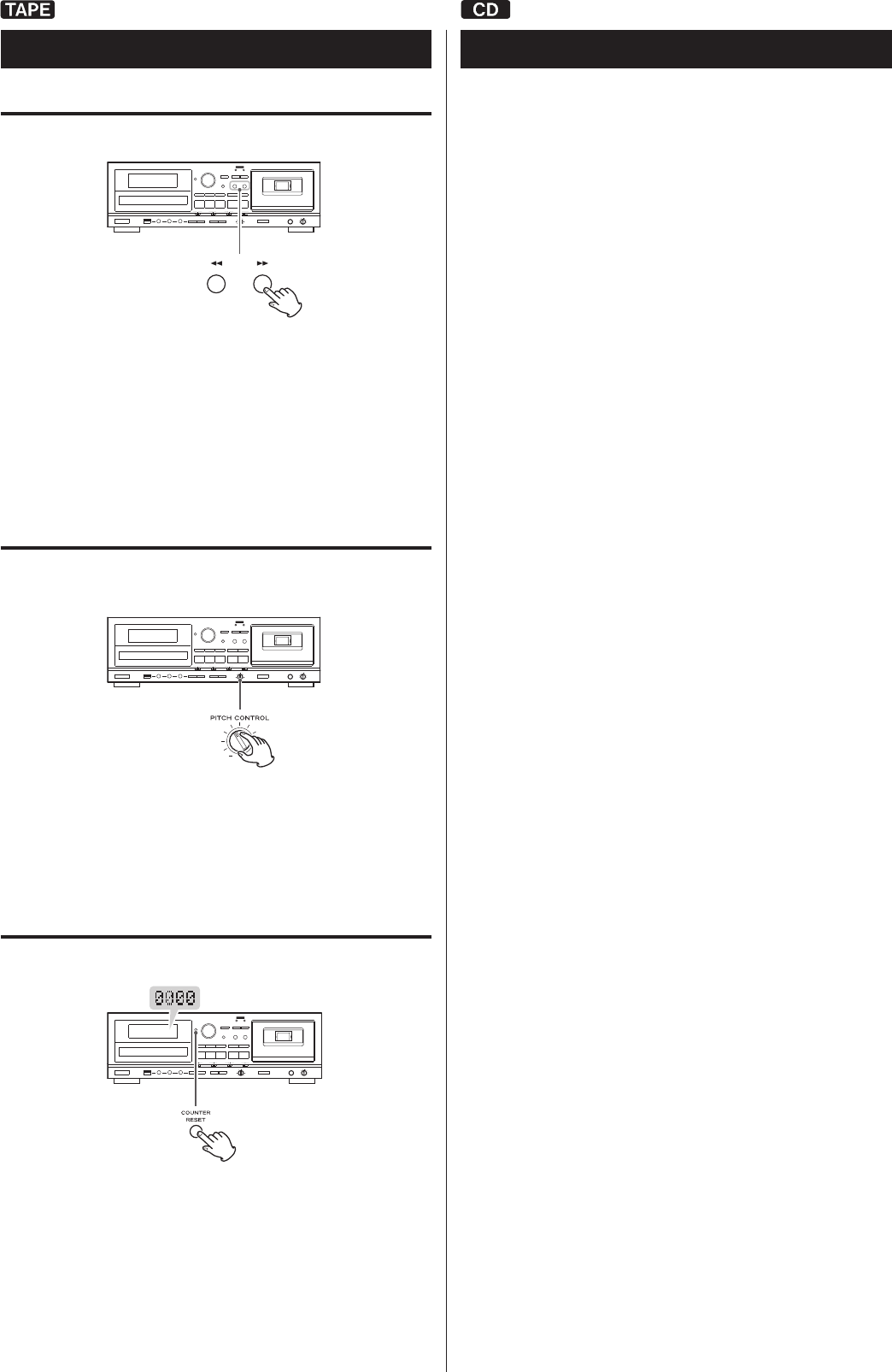
30
Fast-forwarding/Rewinding a tape
Press the Rewind (m) button or the Fast-forward (,) button to
wind the tape rapidly.
Winding stops when the end of the tape is reached. To stop
winding before the end, press the TAPE stop (H) button.
< You can wind the tape when CD/USB/LINE is selected as a source.
These buttons do not, however, function when in a recording
mode.
Pitch control
This control varies the pitch of the music during playback.
Turning the PITCH CONTROL knob clockwise increases the playback
speed and raises the pitch by a maximum of +10%.
Turning the PITCH CONTROL knob counterclockwise reduces the
playback speed and lowers the pitch by a maximum of –10%.
< This control does not work during recording.
Tape counter
Press the COUNTER RESET button to reset the tape counter to
“0000”. You can use this function to easily locate any desired point
on the tape.
Listening to a Cassette Tape (2) About Recording
CD-R and CD-RW
A CD-R disc can be recorded only once. Recorded tracks cannot be
erased. However, if some recordable time is still available, additional
recording is possible. If you finish recording and finalize the CD-R disc,
it can be played with a normal CD player. (Some CD players may not
be compatible.)
On a CD-RW disc, even if no recordable time is available, you can erase
tracks already recorded and record tracks repeatedly. You can erase all
tracks at once or the last track only. However, you cannot erase only
tracks in the middle of the disc.
If you finish recording and finalize the CD-RW disc, it can be played
with a normal CD player. (page 36). Only CD players that support
CD-RW discs can do so.
If you want to record again on a finalized CD-RW, unfinalize it (page 37).
By unfinalizing (reversing the finalization), you will be able to record
and delete tracks on the CD-RW again.
CD-RW discs can only be played with compatible CD players.
Serial Copy Management System
This unit is in compliance with the Serial Copy Management System
standard. This standard has been established to restrict digital-to-
digital copying to only the first generation. The basic rules governing
this system are as follows:
Rule 1
A digital recording is possible from a digital source such as a CD,
DAT or MD onto a recordable CD-R, CD-RW, MD or DAT through
a digital input connection. However, further digital-to-digital
recording is prohibited for the second and later generations.
Rule 2
When an analog source such as an analog disc or FM broadcast
is digitally recorded by using a CD-R, CD-RW, MD or DAT, this
recorded source can be digitally recorded on another CD-R,
CD-RW, MD or DAT. However, further digital copying is prohibited.


















